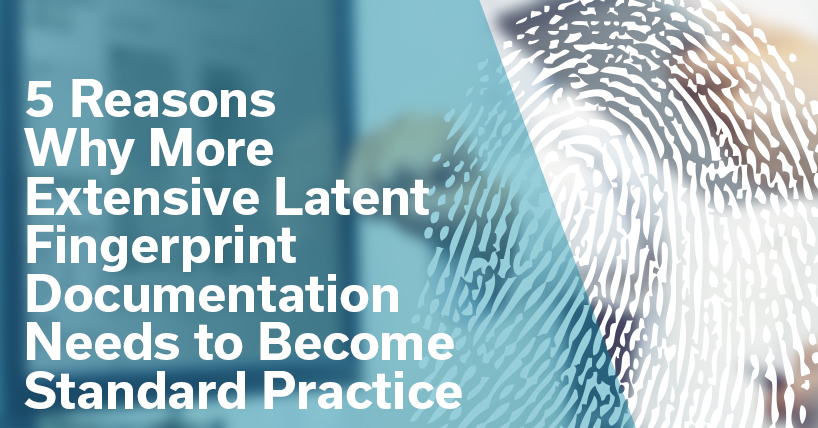Thorough Latent Documentation: No Longer Optional

Latent fingerprint analysis has grown into an intricate science. As the process becomes more complex, the need for accurate documentation becomes more critical. Today’s examiners can expect to be required to share the process and the conclusions of their work during many stages of the legal process.
All of this argues that thorough latent fingerprint documentation is no longer optional, rather, it needs to become a standard practice. Departments can decide how to generate that documentation, but an electronic latent case management system (e-LCMS) like LatentWorks has a strong advantage for building-in the necessary completeness and efficiency.
There Will Be Questions
The days of undocumented analysis being accepted as fact in the legal system are over. Any form of scientific analysis demands that you show evidence for the conclusion.
Today’s latent examiners must be able to justify their findings with complete and accurate documentation. They can expect both questions and challenges.
The automated form of documentation provided in LatentWorks allows examiners to answer questions with science and supported data. It is an easier and more accurate way of reporting findings. Examiners can show exactly what they saw, what they did, and what they concluded.
Demand for Accuracy
A documentation system improves accuracy, fosters consistency, and provides examiners with tools to do a more thorough job than ever before. LatentWorks allows examiners to show exactly how they reached their conclusions, with a depth of detail that makes clear their expertise.
“When I started in this industry 25 years ago…frequently there was no documentation of analysis, no case notes. Back then, they didn’t ask questions. That is so far from the way it goes today, it’s hard to fathom,” said Maria Ruggiero, supervising forensic ID specialist with the Los Angeles County Sheriff’s Department and user of Mideo LatentWorks.
Expectation for “First Day” Recall
While a case may take years to get to court, the expectation is for expert witnesses to offer complete and accurate recall as if the examination just happened.
With an electronic documentation system, examiners record and save their notes in real time. When they are called to testify in a case that related to evidence that was completed months – if not years – ago, they have the detailed findings and full explanation of how the conclusion was reached right there in the system.
With electronic documentation, prep time is shortened and it is easier for the examiner to be a more accurate expert witness.
Another benefit of a documentation system is the ability to create a court display of evidence and the examination process. In the past, without electronic notes and documentation, examiners would have to do a whole new examination to prepare for court.
This is even more challenging if there is a change in personnel. With an electronic system, all the details used to ID a fingerprint are documented in the notes for everyone to reference.
Required for Accreditation
Documentation is one of the largest aspects of accreditation. Certified technical assessors are looking for case notes that show uniformity of information and processes. Electronic documentation systems create the consistency and detail that is needed.
Every agency has its own process for examination. With an electronic system, the checks that each examiner needs to make during the process are accounted for in the system. They don’t need to remember, they just need to follow the flow set up in the system.
Assessors can access the same system, making it easy for them to see and verify the required level of consistency.
Transparency in the Process
Unlike previous documentation requirements which focused on what was done by the examiner, it’s now critical to document how the examiner performed the analysis.
Anyone should be able to come behind the examiner and determine what was done and what led to the conclusion. Documentation covers this need. LatentWorks makes it easy for examiners to make sure all required steps are completed and recorded.
Handwritten notes are time-consuming and inherently less accurate. With a documentation system, examiners type notes directly into the program. They record both their observations and reasoning as well as the process that was used.
The automated form of documentation provided in LatentWorks, allows examiners and agencies to answer questions with science and supported data. It is an easier and more accurate way of doing latent fingerprint print analysis.
To learn more about the Electronic Latent Case Management System (e-LCMS) discussed, read about LatentWorks.
Have a story to share?
We are collecting stories for an upcoming blog post about the pitfalls of poor documentation in court. Do you have any anecdotes you can share, either that happened to you or someone you know? The stories will be anonymous, unless you are comfortable naming names. Just send an email to [email protected]